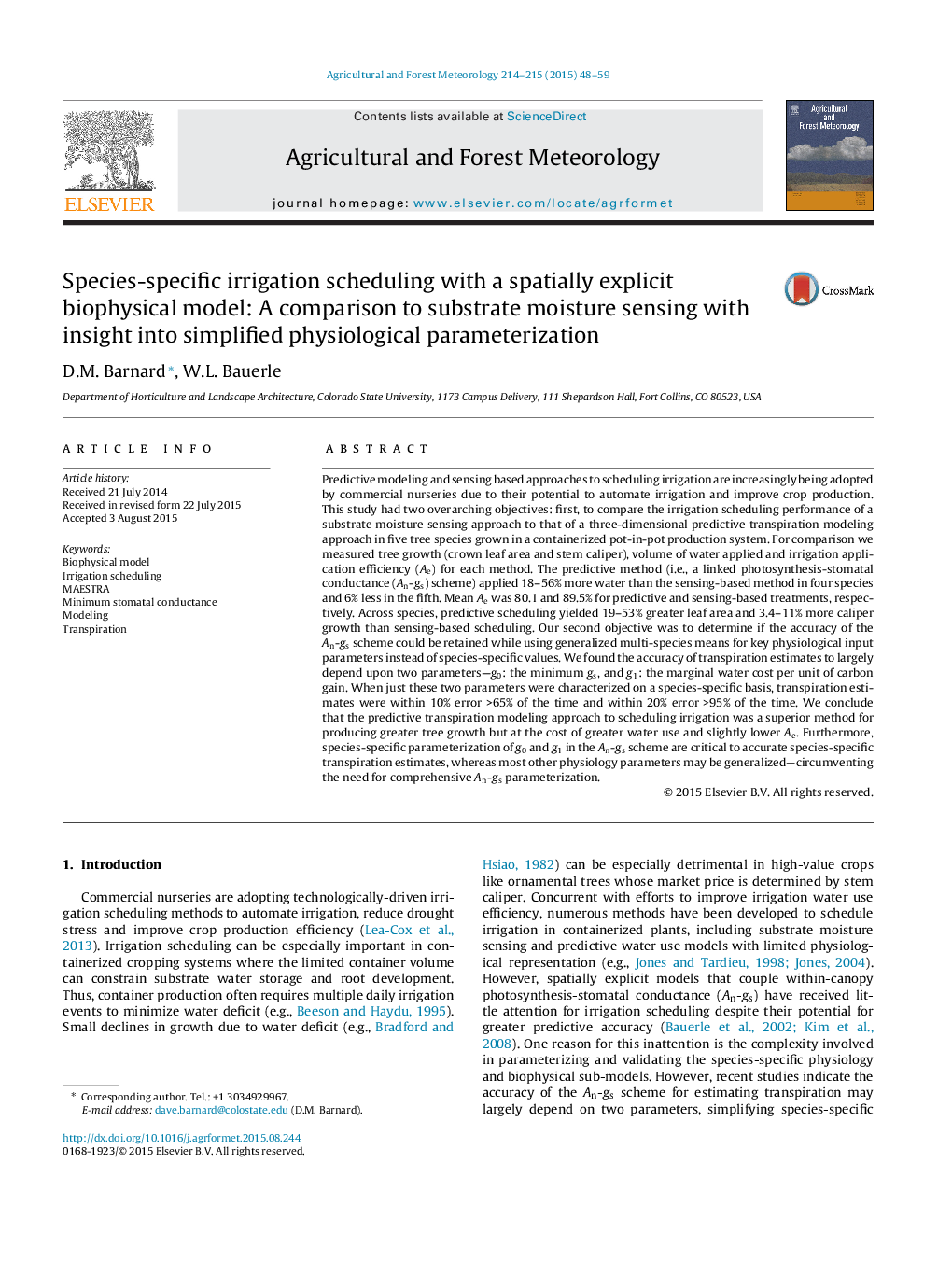| Article ID | Journal | Published Year | Pages | File Type |
|---|---|---|---|---|
| 6537148 | Agricultural and Forest Meteorology | 2015 | 12 Pages |
Abstract
Predictive modeling and sensing based approaches to scheduling irrigation are increasingly being adopted by commercial nurseries due to their potential to automate irrigation and improve crop production. This study had two overarching objectives: first, to compare the irrigation scheduling performance of a substrate moisture sensing approach to that of a three-dimensional predictive transpiration modeling approach in five tree species grown in a containerized pot-in-pot production system. For comparison we measured tree growth (crown leaf area and stem caliper), volume of water applied and irrigation application efficiency (Ae) for each method. The predictive method (i.e., a linked photosynthesis-stomatal conductance (An-gs) scheme) applied 18-56% more water than the sensing-based method in four species and 6% less in the fifth. Mean Ae was 80.1 and 89.5% for predictive and sensing-based treatments, respectively. Across species, predictive scheduling yielded 19-53% greater leaf area and 3.4-11% more caliper growth than sensing-based scheduling. Our second objective was to determine if the accuracy of the An-gs scheme could be retained while using generalized multi-species means for key physiological input parameters instead of species-specific values. We found the accuracy of transpiration estimates to largely depend upon two parameters-g0: the minimum gs, and g1: the marginal water cost per unit of carbon gain. When just these two parameters were characterized on a species-specific basis, transpiration estimates were within 10% error >65% of the time and within 20% error >95% of the time. We conclude that the predictive transpiration modeling approach to scheduling irrigation was a superior method for producing greater tree growth but at the cost of greater water use and slightly lower Ae. Furthermore, species-specific parameterization of g0 and g1 in the An-gs scheme are critical to accurate species-specific transpiration estimates, whereas most other physiology parameters may be generalized-circumventing the need for comprehensive An-gs parameterization.
Related Topics
Physical Sciences and Engineering
Earth and Planetary Sciences
Atmospheric Science
Authors
D.M. Barnard, W.L. Bauerle,
